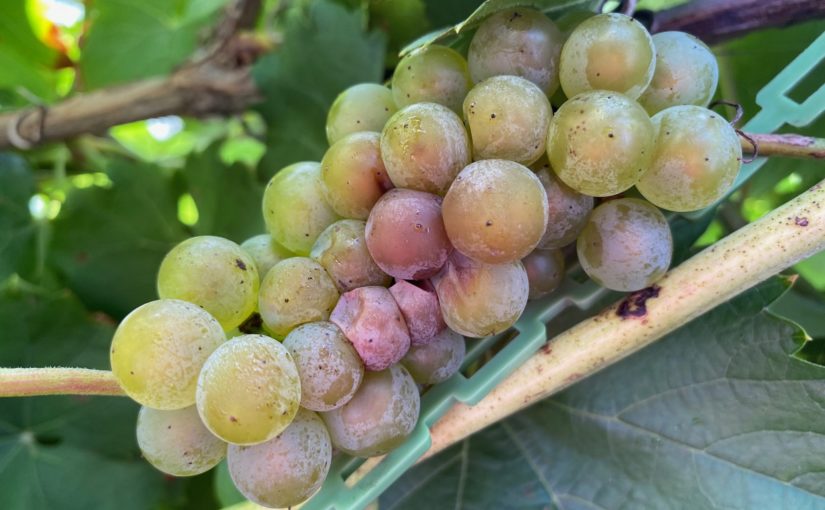Sep 10, 2020Late season disease management in grapes outlined
Late season fruit rots: Sour rot complex, botrytis and ripe rot are major concerns in the Midwest. Though it’s been pretty dry across much of Indiana recently, some untimely rains can lead to disaster. Once berries split due to rain, yeasts and bacteria quickly invade damaged fruit, leading to rots that attract fruit flies. Before you know it, you have a stinking mess on your hands aka Sour Rot Complex.


Recent studies have determined the importance of managing fruit fly populations as a means of slowing sour rot. Mustang Maxx, malathion, Delegate are the main insecticides we have for management and all have relatively short PHIs (1, 3, and 7 days respectively). Be sure to rotate chemistries, as resistance to Mustang Maxx and malathion is apparently widespread in the Finger Lakes. Addition of a general sanitizer such as Oxidate or Fracture should help reduce microbials responsible for the rot part of the problem, but research has shown that managing the fruit flies is key.
Botrytis is much less common in the Midwest than sour rot. But it does occur occasionally, especially on tight-clustered varieties. There are botrytis-specific fungicides labeled for use in grapes and growers with problems should become familiar with their use. At this time of year, it’s really too late to do much about Botrytis as applications should have been made at bloom, cluster closing, and veraison.
Ripe rot is a newer problem we’ve seen for the past few years, especially on Frontenac and Marquette varieties. A veraison application of FRAC 11 containing fungicides appears to be reasonably effective at managing ripe rot. A follow up application adds additional protection. Watch PHIs closely.
Leaf diseases: We are seeing a little powdery and downy mildew on grapes this year, but not nearly as bad as in recent years. These diseases often get established in the late season near or after harvest. Managing these diseases is important to maintain healthy foliage all the way until frost to maximize winter hardiness. Growers should consider a late season application of fungicides to keep these diseases under control to protect the foliage and assure adequate cold acclimation.
Downy can be controlled after harvest (when PHIs are no longer a concern) with phosphorous acid products, mancozeb, captan or one of the newer products such as Presidio, Ranman or Zampro. However, none of those fungicides will control powdery mildew. So a tank mix including one of the above with a DMI fungicide such as Rally or Tebuzol would be a good approach. There are several other options for powdery mildew such as Torino, Endura, Quintec, or Vivando, or even sulfur on sulfur-tolerant varieties.
If fruit has not been harvested yet, then options are limited to a hand full of products with short PHIs: phosphorous acid or captan for downy mildew, and Torino, Topsin-M, or sulfur for powdery mildew.
– Bruce Bordelon, professor of horticulture, Department of Horticulture and Landscape Architecture, Purdue University
Photo at top: Late-season fruit rot.















